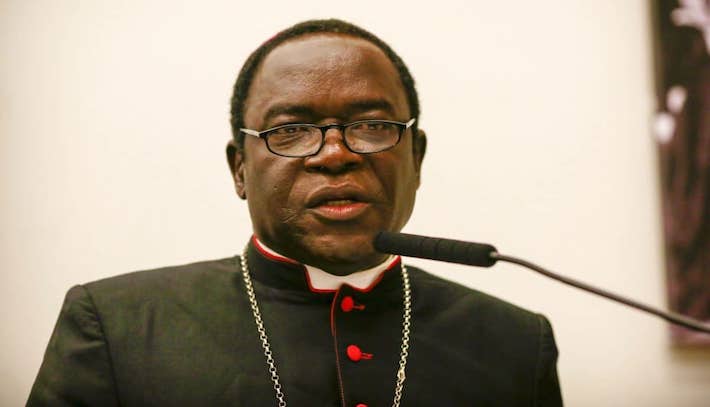No fewer than 135 persons have died from Lassa fever and Mpox diseases out of 832 confirmed cases the Director General of the Nigeria Centre for Disease Control and Prevention (NCDC), Jide Idris has revealed.
Briefing newsmen on Friday in Abuja, Idris revealed that 132 deaths were recorded from Lassa fever and 3 deaths from mPox disease. He however noted there was a steady decline in Lassa fever cases in epidemiological week 16, ending April 20, 2025.
According to him, the Agency in collaboration with State Health Authorities and Partners, have continued to monitor the diseases through national surveillance platforms while proactively supporting affected states with timely interventions, in line with its mandate to protect public health by providing timely, transparent, and accurate health information.
He said: “Cumulatively, as of epidemiological week 16, the country has reported 4,253 suspected cases of Lassa fever, 696 confirmed cases, and 132 deaths. The overall Case Fatality Rate of 19.0 per cent.”
While noting that the improvements in recent weeks reflect the positive impact of ongoing surveillance, treatment, and community engagement efforts, he however warned that “the risk remains high, especially in endemic areas. So, we must intensify our efforts,” he added.
On cerebrospinal meningitis, the NCDC boss noted that as of week 14, the data for CSM showed a steady decline in new cases and fatalities over the past three weeks, signaling that control measures were beginning to have an impact.
“Surveillance, treatment, and vaccination strategies are being dynamically adapted to emerging data, with a strong focus on community trust and early care seeking.
So while the outbreak remains serious, national and sub-national coordination, improved preparedness, and vaccination efforts are turning the tide.
“The response will be sustained until full containment is achieved and state-level ownership of the CSM Incident Action Plan is realized.”
On Mpox, Idris noted that three Mpox-related deaths were recorded: two in Week 10 from Abia and Ebonyi states, and one recently in Rivers State, involving a young male with advanced HIV and Tuberculosis. This brings the national CFR for 2025 to 2.2 per cent.
According to him, the Agency since the beginning of 2025, has continued to monitor and respond to outbreaks across the country through coordinated national surveillance efforts.
“From week one to Week 16 of 2025, a total of 723 suspected cases of Mpox were reported across 35 states and the Federal Capital Territory. Of these, 136 cases were laboratory-confirmed, spanning 27 states and the Federal Capital Territory.
“The epidemic curve for the period demonstrates several peaks in both suspected and confirmed Mpox cases, highlighting a pattern of persistent transmission. The geographic distribution map for this period shows that nearly all states have reported suspected cases, with a significant concentration of confirmed cases occurring in the southern and central regions of the country.”
According to him, the appropriate comprehensive and multi-tiered response strategy was currently in place, including “the activation of the Emergency Operation Centre continues to provide both national and sub-national leadership through weekly review meetings with hotspot states.
“The National Rapid Response Teams have been deployed to hot spot states to strengthen the response capacity of local health authorities. Essential medicines, intravenous fluids, personal protective equipment, laboratory consumables, and other necessary materials have been strategically distributed to / prepositioned in states to ensure timely access during case surges.
“The capacity of State laboratories has been strengthened to conduct appropriate testing and ship samples for confirmation to the NCDC National Reference Laboratory in Abuja and the Central Public Health Laboratory in Yaba, Lagos.”
In addition, “five more mpox laboratories have been optimized in five geopolitical zones – Bauchi, Kano, Cross River, Rivers & Enugu states; and mentorship is being provided to improve sample management, handling, and result reporting.
“Healthcare workers continue to receive targeted training in case management, including infection prevention and control, as well as hands-on workshops on lumbar puncture and CSM care best practices. Community outreach is being reinforced through radio and TV jingles, distribution of social and behavioural change communication materials, and media sensitization for stigma-free reporting.
“Daily coordination with state health teams ensures timely adaptation of messages based on community feedback. Epidemiological data—including age distribution, geographical trends, and case incidence—is closely monitored to guide timely vaccination efforts.
“A mortality review meeting is being convened on the mpox deaths in Abia, Ebonyi, and Rivers States. These layered interventions aim to strengthen Nigeria’s capacity to respond swiftly and effectively to outbreaks, protect vulnerable populations, and reduce mortality.”
Idris regretted that mPox has shown a “steady increase in Nigeria since it’s reemergence in 2017, with sharp spikes from 2022 to 2024, making the country one of the most affected globally. These figures suggest potential underreporting or delays in case and contact entry, pointing to a gap between field surveillance activities and timely data entry into electronic systems.”








2 Responses
Your article helped me a lot, is there any more related content? Thanks!
Thanks for sharing. I read many of your blog posts, cool, your blog is very good.